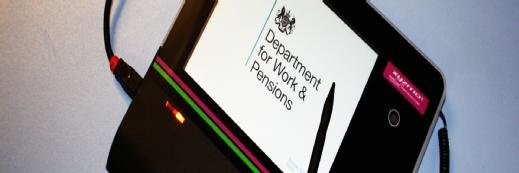
Getty Images
Huge queues for Universal Credit online applications due to coronavirus surge
Online queues in the tens of thousands are hindering emergency applications for Universal Credit, with the Gov.uk Verify identity verification system becoming a particular bottleneck
A government appeal for people affected by the coronavirus crisis to apply online for Universal Credit has led to enormous queues on the website for benefit applications.
Tens of thousands of people whose livelihoods have been hit by the nationwide lockdown for the Covid-19 outbreak have become eligible for Universal Credit (UC) to help them financially survive. Yesterday (23 March), the Department for Work and Pensions (DWP) started limiting access to jobcentres and “urged” the public to use online channels instead.
This resulted in huge online queues for many people applying, with some complaining on social media about the difficulties they were experiencing. A particular bottleneck appears to have arisen from the requirement for claimants to use the Gov.uk Verify identity verification system to prove they are who they say are.
One person reported being told they were number 35,000 in a queue to have their identity verified, with the wait declining by only 1200 people in two hours.
Labour MP Dawn Butler shared a screen shot on Twitter that she was sent showing there were 76,628 people in the queue for UC applications. In response to Butler’s tweet, another user claimed they were number 23,000 in a queue which, according to another screen shot, appeared to be on the Post Office website for the Gov.uk Verify identity verification service - the Post Office is one of a small number of approved organisations that operate the Verify service. That user said they started their application at 2pm, left their laptop waiting all the following night, and only got access to set up their Verify account the following morning.
Computer Weekly understands that DWP does not currently have figures for the number of recent applications, but has acknowledged that the number has increased dramatically.
One way to gauge the increase in demand is through the number of people setting up Verify accounts. In the week from 9 to 15 March, about 36,000 Verify registrations were completed – a figure that has been consistent for several weeks. Verify is also used for a range of other government services, not only UC.
However, between 16 and 22 March, Verify received 118,416 new sign-ups - an increase of over 82,000. The number of people attempting to claim UC online is likely to be significantly higher, because only 35% of UC claimants are able to successfully create a Verify account.
Verify uses digital information such as passports, driving licences and credit ratings to establish whether or not an applicant is who they say they are. Because many UC claimants do not have a sufficient digital footprint, their Verify registration is rejected.
DWP is already moving 10,000 existing staff to focus on processing new claims, and is limiting access to jobcentres to only the most vulnerable claimants.
“The department has contingency plans in place and is able to redeploy staff from other areas to help meet customer demand, but clearly these are unprecedented times,” said a DWP spokesperson.
The DWP was warned as long ago as 2015 that the performance of Verify would be problem for UC applications even at normal claimant levels, but the unplanned surge as a result of coronavirus is pushing the system well beyond its regular usage.






